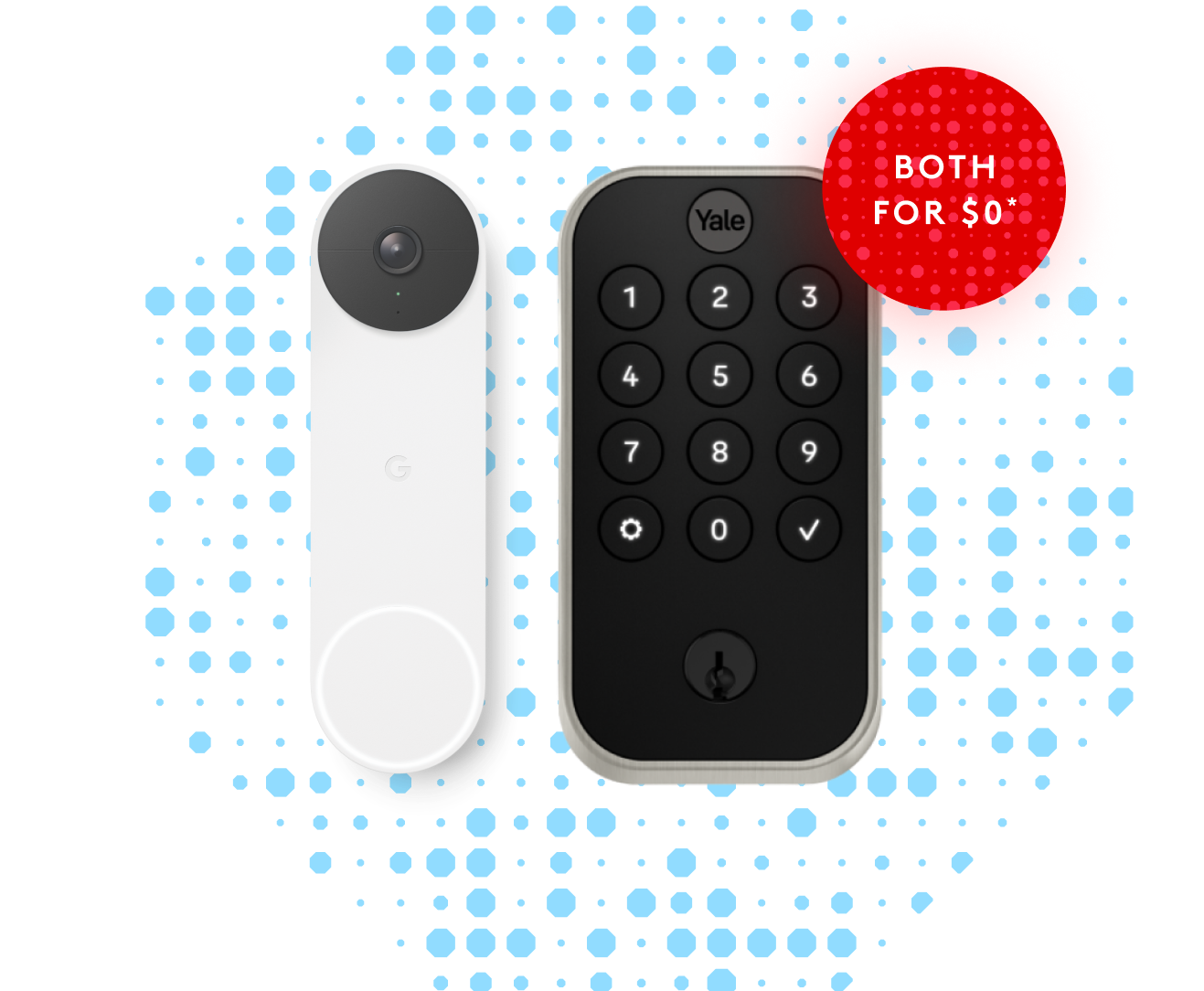Chances are good you're familiar with glass break detectors. They can alert you to the sound or vibrations of cracking or shattering glass, sounding an alarm or send you a notification if the sensor is triggered.
These types of alarms are beneficial when used with your alarm and lighting system to alert you about a break-in as it’s happening.
So, do glass break sensors really work?
If you get the proper glass break sensor for your home, it can be very effective at its job. And effectiveness only increases with a dedicated security system.
Keep reading to learn more about these devices and how they work.
What is a glass break detector and how does it work?
A glass break sensor detects the vibrations that happen as glass breaks, the sound of it breaking or both of these triggers. Once the sensor is triggered, it sounds an alarm or sends a notification to your phone or the police.
These alarms typically go into three categories: acoustic, shock or dual sensors.
An acoustic sensor detects the sound of breaking glass, while the vibrations of the glass breaking triggers shock sensors. Dual sensors can sense a combination of sounds and vibrations.
What can trigger different types of glass break sensors?
Glass break sensor technology is evolving, so you may find a combination of sensors or triggers in your sensor.
Here are a few common ones:
Shock sensors respond to the shaking of breaking glass but can also be triggered by other vibrations, including thunderstorms, sonic booms or fireworks.
An acoustic audio switch sensor detects the sound of breaking glass. This type of sensor may also respond to false alarms with a similar frequency, including thunder, barking dogs, slamming doors or windows, dishes breaking or the television.
Dual sensors combine both shock and audio detectors, requiring both the vibration of breaking glass and its sound to be triggered.
High frequency-low frequency (aka flex-style) glass break detectors are also dual-technology detectors. They differ in that they sense the low-frequency levels of glass as it bends before it breaks, then the higher sound of the glass breaking.
Where should you install glass break sensors?
Where you install a glass break sensor depends on several factors, including the type of sensor and the manufacturer. Some sensors will need to be mounted directly on the glass, while others are installed on the wall or ceiling. Most detectors should be installed within 5 to 20 feet of windows or doors.
And don’t forget to read the manufacturer’s instructions for proper placement.
One ADT glass break sensor covers a 25-foot range, but other glass break sensors may require multiple detectors to work correctly.
Benefits of Glass Break Sensors
When you’re building a home security system, glass break sensors are just one type of detector that helps monitor your home. For the best and most accurate coverage, you should add different kinds of detectors and sensors throughout your home.
What are five advantages of glass break sensors?
Glass break sensors are excellent as a secondary line of defense, primarily when used with other home security devices like window and door sensors and motion sensors.
Perfect for smaller spaces with many windows, where additional motion detectors are excessive.
You may want to add a glass break detector to rooms where a false alarm might trigger a motion detector.
Some glass break sensors allow for an automation emergency response or notification to your phone that you can access remotely from virtually anywhere.
Integration with smart home automation.
Get peace of mind with ADT’s Glass Break Sensors.
ADT helps you protect your entire home, from smart flood sensors to indoor and outdoor cameras.
Learn more about how ADT can help you keep your home safe today.
Frequently Asked Questions about Glass Break Sensors
How many glass break sensors do I need?
Each home is different, but generally, you'll need one sensor per room. Many glass break sensors allow you to change the sensitivity to low, medium or high for a tailored approach to home security. ADT's glass break sensors have a 25-foot detection range.
How much area does a glass break sensor cover?
ADT’s glass break sensors have a 300-foot transmission range and 25-foot detection pattern, so so you can you one to protect a wide area of your home.
Do glass break sensors work through walls?
Since glass break detectors work via frequency or vibrations (or both), they can't sense things through walls. It's best to add a glass break sensor to each room.
[1] https://ucr.fbi.gov/crime-in-the-u.s/2019/crime-in-the-u.s.-2019/topic-pages/burglary
[2] https://www.ktvb.com/article/news/crime/we-asked-86-burglars-how-they-broke-into-homes/277-344333696
[3] http://www.jsu.edu/police/docs/Schoolsafety.pdf
Related Articles:


